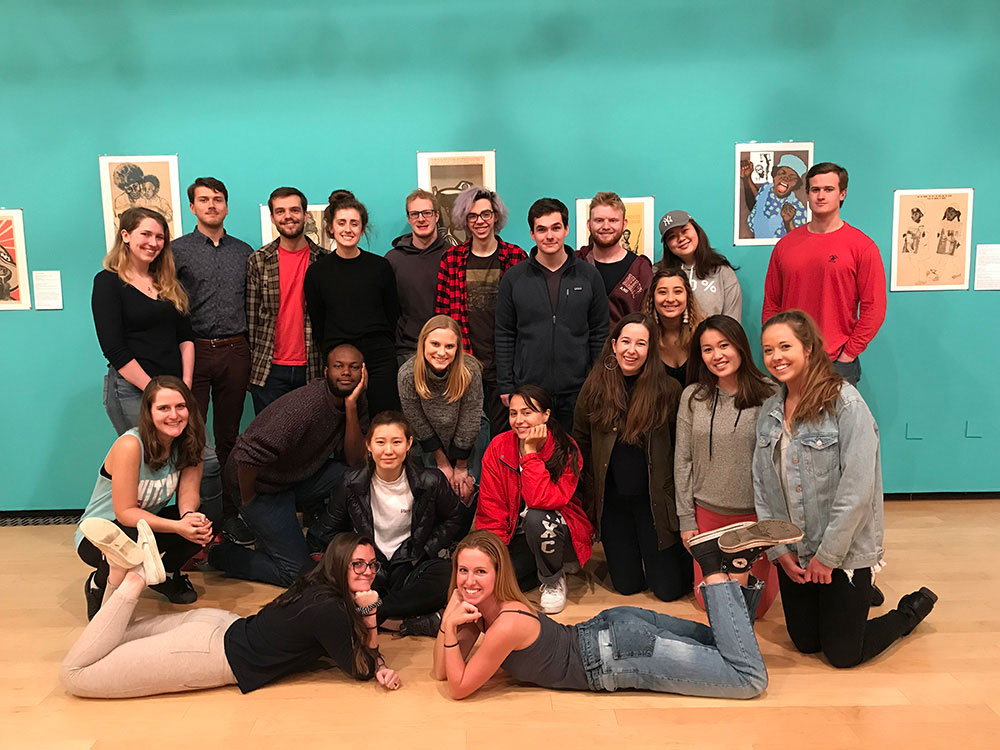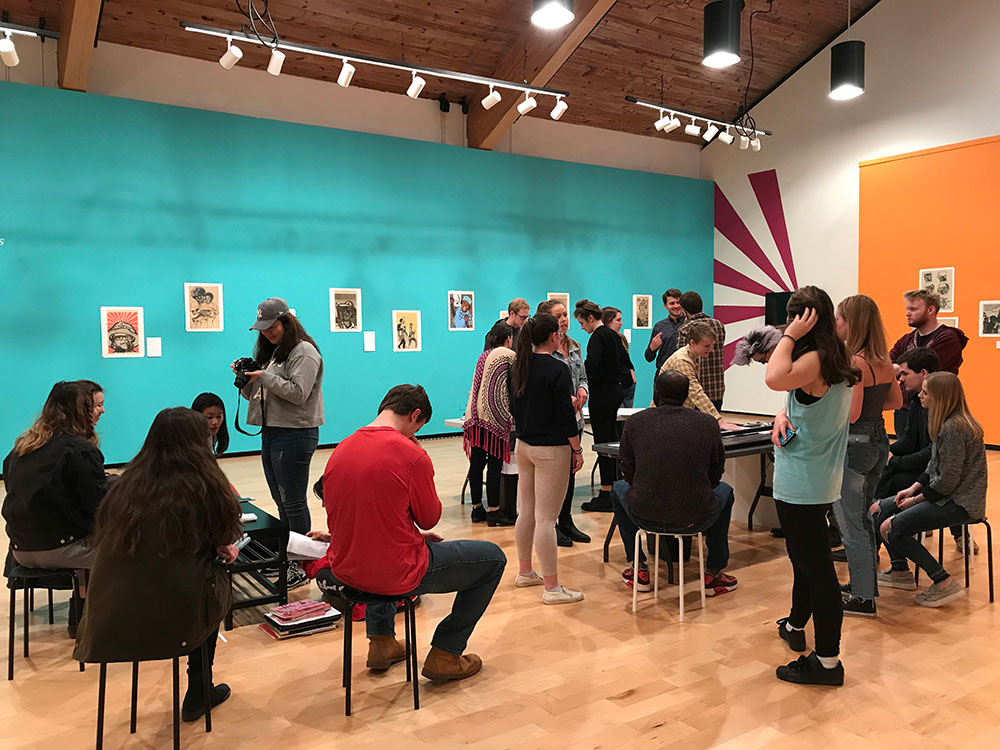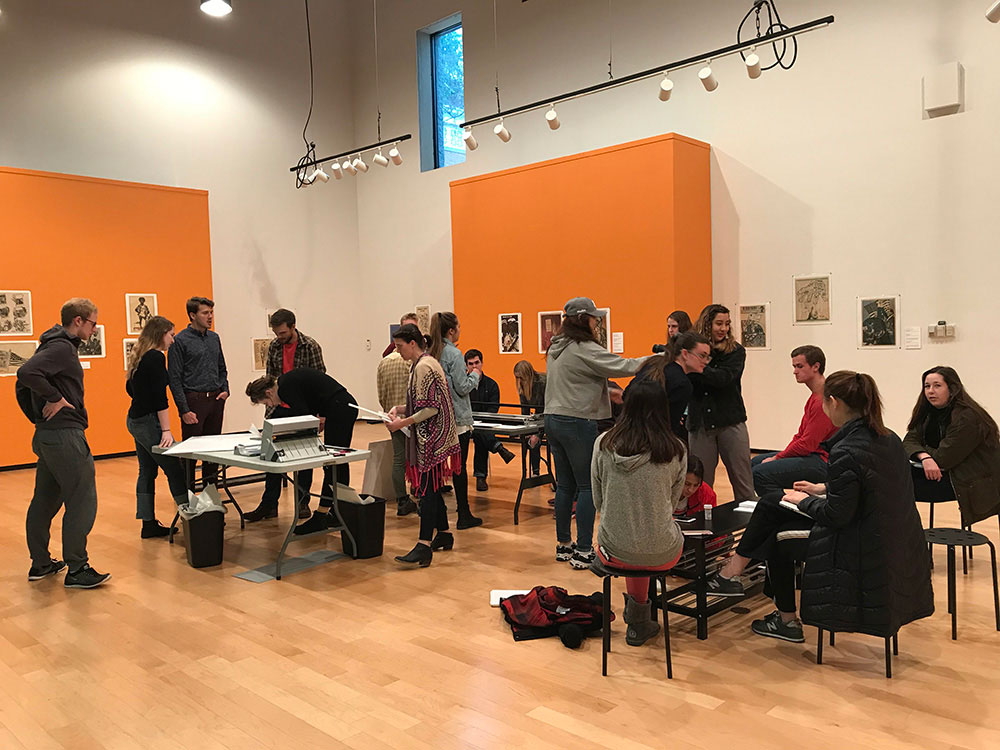From cabinets of curiosities to today’s virtual exhibitions, students learned about the history and theory of museums in the western world in “Beyond the Museum: Exhibiting Culture Today,” an interdisciplinary museum studies class taught by Professor Joy Sperling.
Sperling’s students examined museum functions across different societies, including private aristocratic cabinets of unusual objects such as P.T. Barnum’s great nineteenth-century American Museum, which held such manufactured “humbug” exhibits as the Fiji Mermaid (really a monkey torso sewed onto a fish body).
Other subjects of discussion included the great national museums of the early nineteenth century, the vast collections of the Victorian Age, the Living Exhibits of people at World’s Fairs, at Living Museums at places such as Historic Williamsburg, and the fantasy “museums” of EPCOT Center.
The class examined how museums might address the needs of future generations by asking: What do they collect? Who chooses what is worthy of being collected? What kinds of cultural objects does a museum collect and for whom? In other words, how are museum narratives constructed, and how do museums make objects “special” by selecting objects for collection and display?
“We visited several different kinds of museums to see how every different kind of museum creates a different narrative,” said Professor Joy Sperling. “Each one was inspiring in its own way, even the smallest museum is significant. In fact, the Hunter Robbins Museum in Granville inspired one class member so much that he offered to work there.”
The class also learned from several visitors over the course of the semester. One visitor was Professor Joe Hancock of Drexel University, the world’s leading authority on the history and cultural significance of cargo pants.
“He kept all of us entertained with his stories about the ‘war’ over whether cargo pants are fashionable or just plain ugly and told us all about how he was interviewed on television about the debate,” said Sperling.
The class was charged to create an actual exhibition for an imaginary museum, for which they constructed narratives and meaning from everyday objects. The class curated and mounted an exhibition of these objects at the end of the semester.
Each student chose one purchased or borrowed object from current culture to include in the exhibition. They researched the historical origin, history of, and current cultural significance of their chosen object and wrote an essay based on that research for an exhibition catalogue.
The Denison Museum lent pedestals and shared information about how to make and produce professional quality wall labels for each object.
Posters designed and created by the students advertising the show; they created and distributed postcards and online invitations to the exhibition. Students photographed objects, designed and printed an exhibition catalogue, and hosted an opening reception attended by the class and friends, as well as by several administrators, faculty, and students from across campus.
“The class ended with a de-briefing after the exhibition and catalogue were complete,” said Sperling. “We discussed openly what we could and should have done better — some better coordination among ourselves might have helped—but this was the first time the class was taught.”
“We also talked about what we did well — had tons of fun and got to know each other and our respective strengths and weaknesses really, well,” she added.









